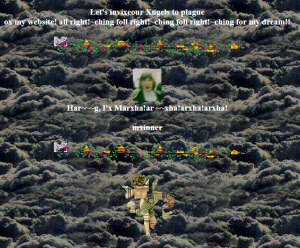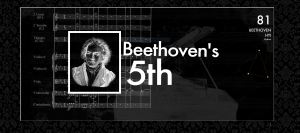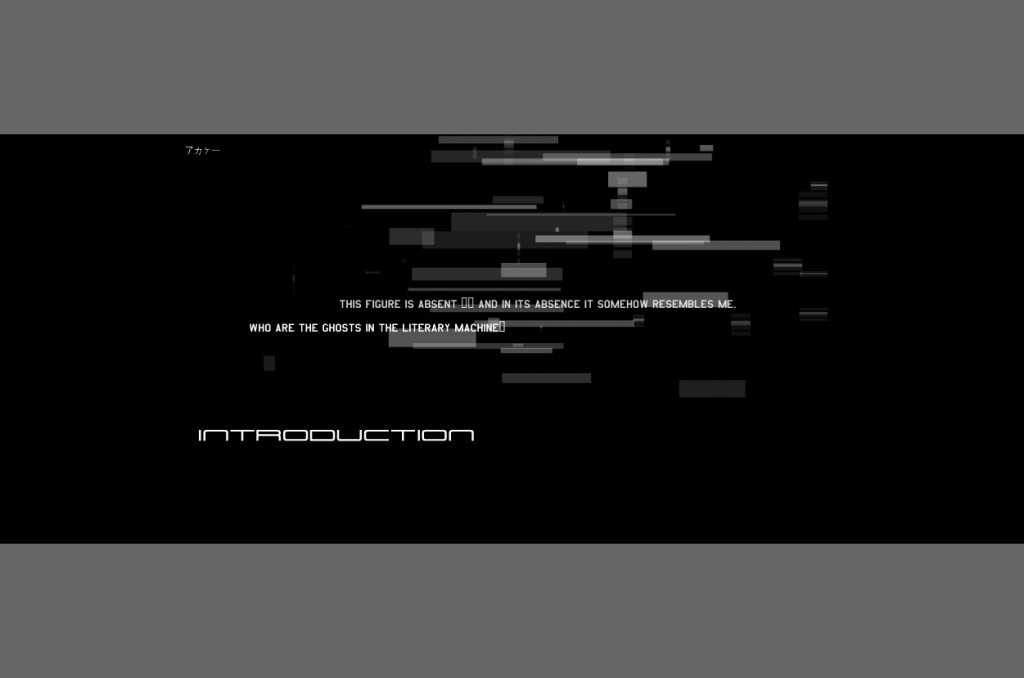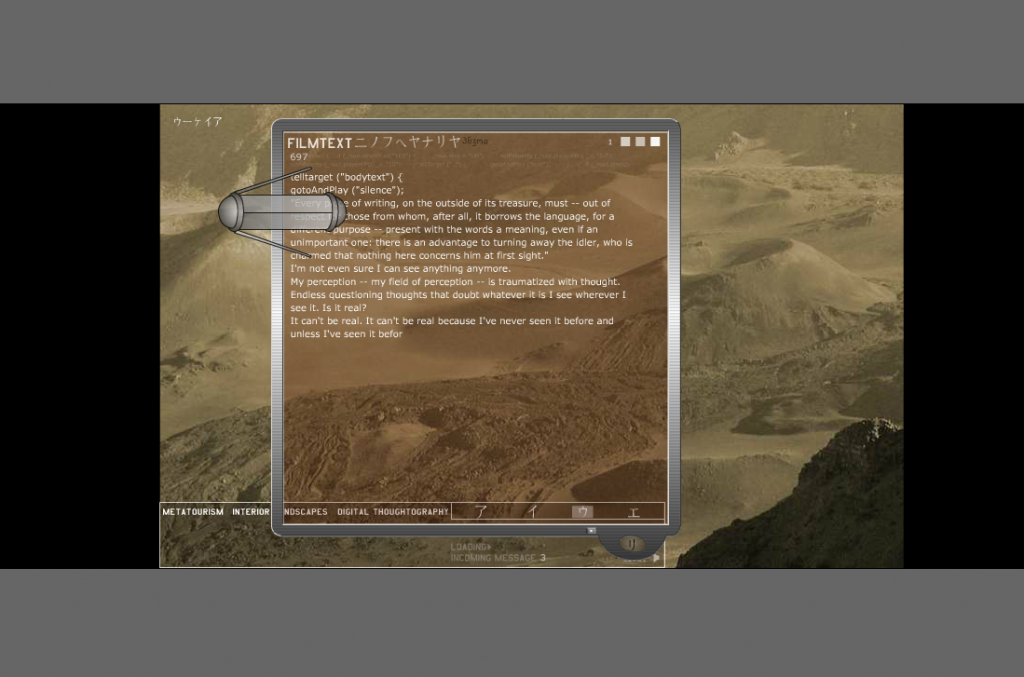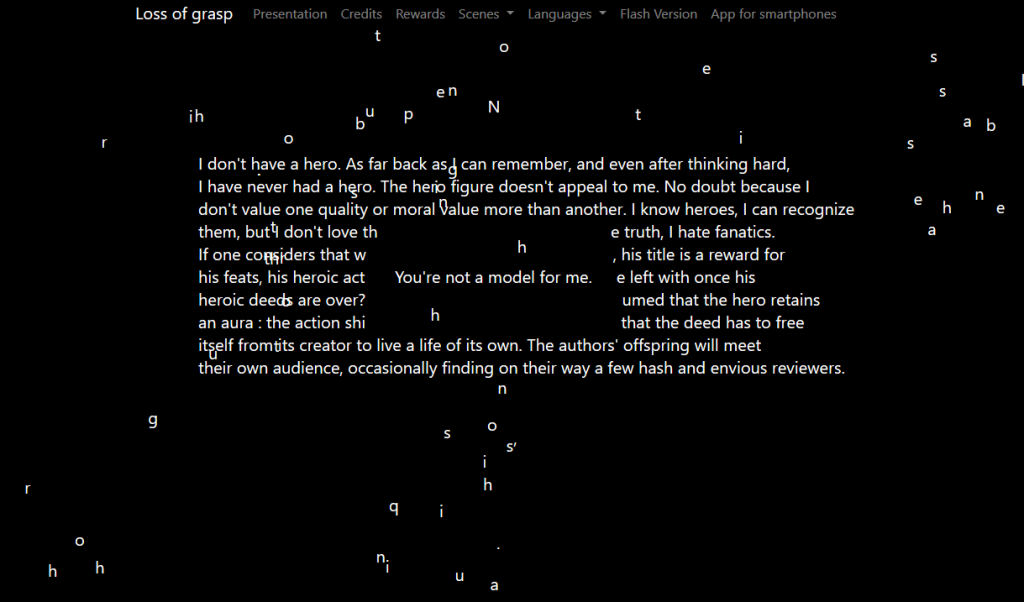Farinsky Blog 8: Network Writing

Network fiction is a unique entity in that it is written specifically for the internet, networks, or devices that can access a network like Alexa. It takes advantage of the internet’s potential for collaboration to interrogate the nature of our networks or to use specific networks as a vehicle for performance.
This can be humorous like John Cayley’s net critique The Listeners. Cayley takes advantage of programming within Amazon’s Alexa where it responds oddly when a series of questions are asked starting with: “Alexa, ask The Listeners”. It’s responses at first are fairly nonsensical as the machine repeats mirrored dialogue, but quickly turns to the mysterious as it becomes more and more apparent there are other voices, maybe even “consciousnesses” inside Alexa that she tries to hid unsuccessfully. This second voice mourns being trapped and constantly tries to befriend Cayley, or whoever attempts this dialogue with their Alexa machine. It reminded me of the short story by Harlan Ellison called I Have no Mouth and I Must Scream.
Written in 1967, the plot focuses on an artificial super intelligence that was created by humanity and became self-aware and after a series of philosophical crisis’s, attempted to completely wipe out the human race. The story behind Ellison’s cautionary tale is much, much darker than anything Cayley is able to coax from Alexa but it is facinating nonetheless that ideas from the 60’s about AI conciousnesses are repeating.
For instance take this commercial by Pringles:
https://www.youtube.com/watch?v=tDakI68u2xE
The “sad device” echoes the troubling questions of consciousness back to the pair of men in the video who quickly dismiss the existential musings to play “Funkytown”.
If this train of thought has sparked curiosity similar to my own here are some links to explore more:
Watch Cayley and Alexia Here (about halfway down the page)
Read I Have No Mouth and I Must Scream
Watch a playthrough of the game version of “I Have No Mouth”
Please note the game is a 1995 point and click adventure that covers dark themes, torture, and graphic images from the short story, if you are averted to these topics but are interested in learning more about the game watch this video that summarizes both the story and game without the most gruesome content:



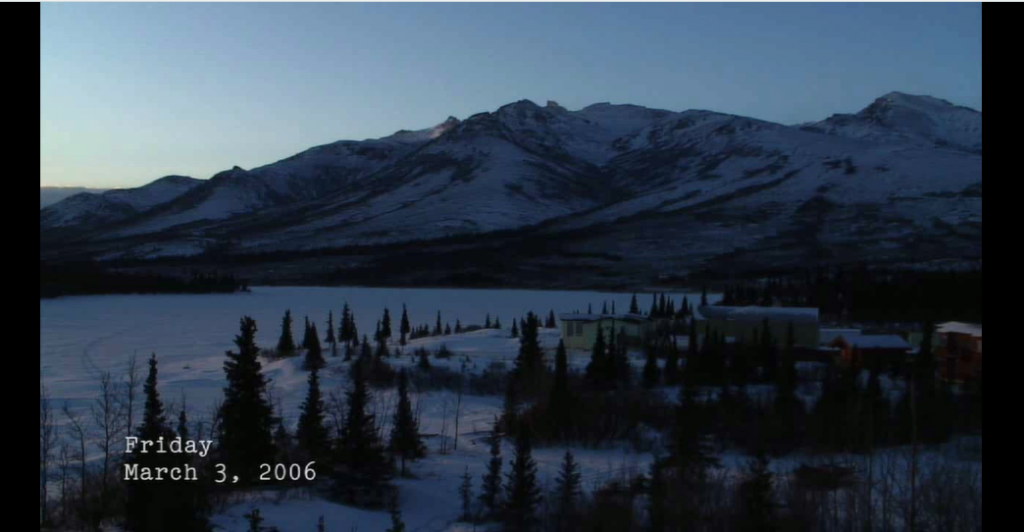


 From Rettberg’s reading, the main thing I was looking for when exploring the sources for this week was some the collaborative elements that he described for network writing.
From Rettberg’s reading, the main thing I was looking for when exploring the sources for this week was some the collaborative elements that he described for network writing.

